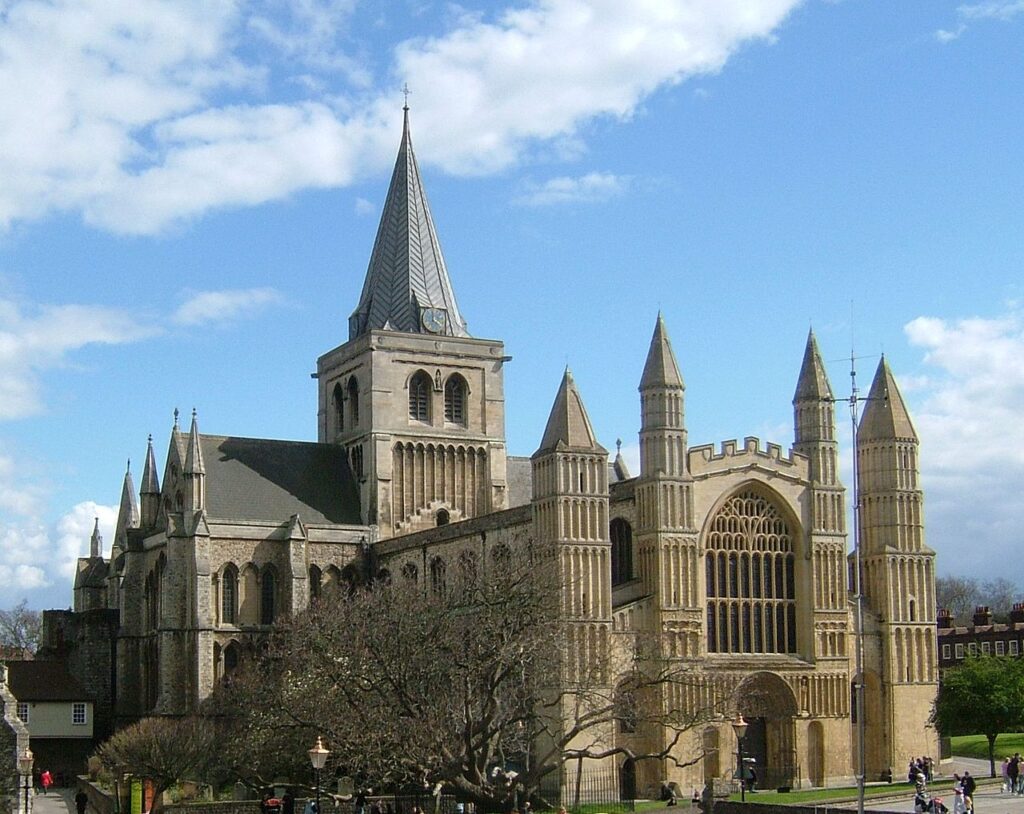Rochester Cathedral

Rochester Cathedral, located in Rochester, Kent, England, stands as one of the oldest and most significant religious buildings in the country. Its history dates back to the early 7th century, when the first church was established by Bishop Paulinus in 604 AD. The current structure, however, primarily reflects the architectural styles from the 11th to the 16th centuries.
The cathedral’s Norman origins are evident in its impressive architecture. The most notable feature is its robust and grand Norman tower, which was constructed under Bishop Gundulf in the early 12th century. Gundulf, an architect and bishop from the nearby abbey of Bec in Normandy, was influential in the cathedral’s development, and his work set the foundation for its enduring presence.
The cathedral underwent significant alterations during the Gothic period, including the addition of an elaborate 13th-century choir and magnificent stained glass windows. These changes introduced elements of verticality and light that characteristically define Gothic architecture.
Rochester Cathedral also boasts a rich interior, including a notable medieval chapter house, and a range of historic monuments and tombs. Among these is the tomb of Bishop John of Rochester, a revered figure in medieval Christianity. The cathedral has been a center of religious and civic life for centuries, witnessing historical events and societal changes.
In modern times, Rochester Cathedral remains an active place of worship and a popular tourist destination. It hosts regular services and community events, continuing its tradition of spiritual and cultural significance. Its combination of historical grandeur and active community role makes it a cherished landmark in the heart of Kent.
